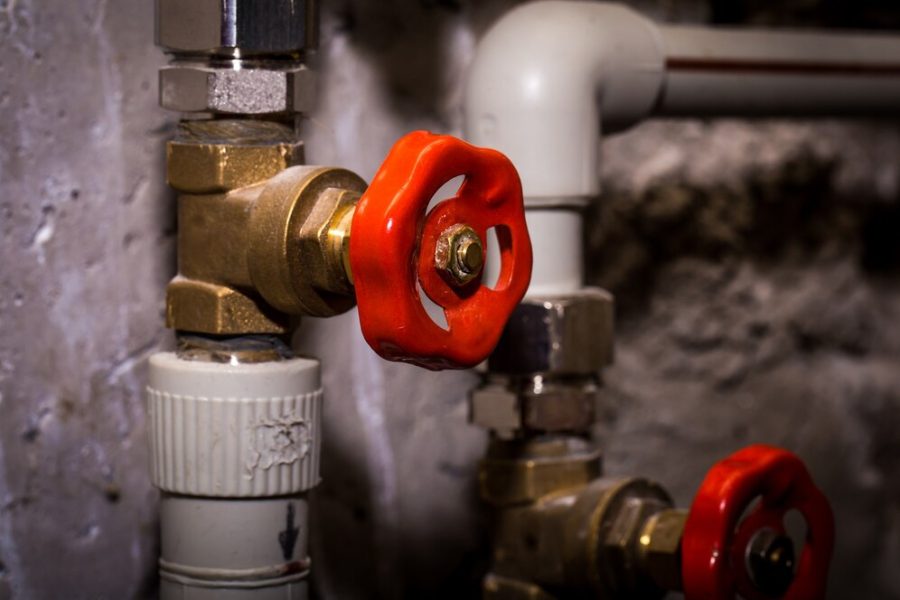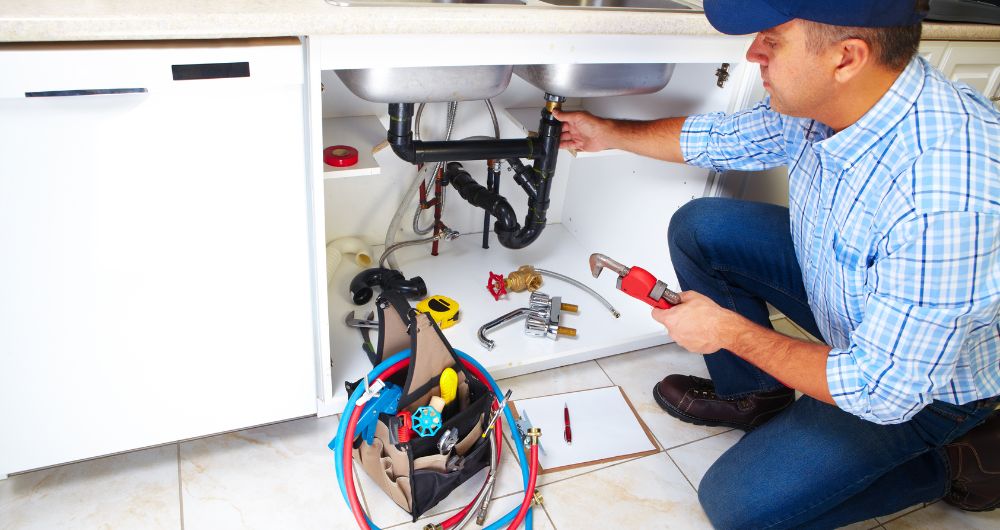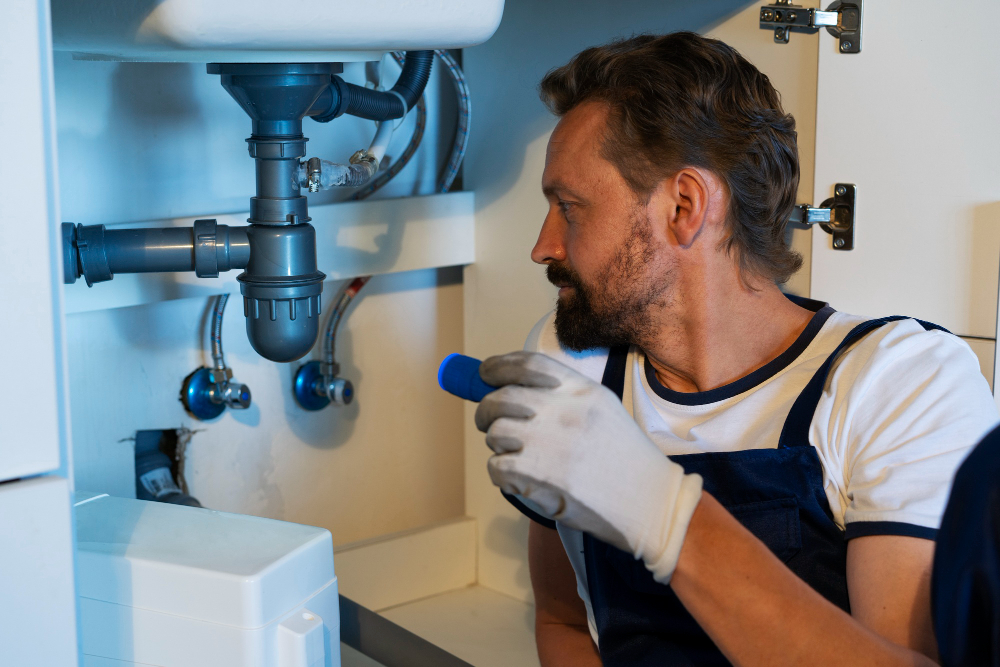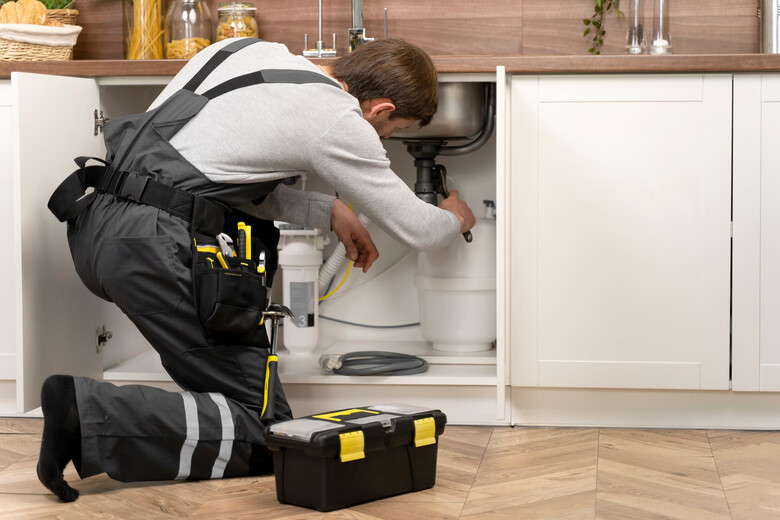Plumbing emergencies can strike at the most inconvenient times, turning a peaceful evening or a restful weekend into a stressful situation. Whether it’s a burst pipe, a severe leak, a clogged drain, or a malfunctioning water heater, having a trusted emergency plumber can make all the difference. Knowing what to expect when an emergency plumber in Torrington, CT, visits your home not only helps ease anxiety but also ensures you’re well-prepared to handle the situation effectively.

The Initial Call: What Information You Need to Provide
When you’re faced with a plumbing emergency, the first and most crucial step is to call an emergency plumber. This initial contact sets the stage for everything that follows, so it’s important to provide accurate and detailed information.
Gathering Essential Details
When you make that call to the emergency plumber, there are specific pieces of information you should have on hand to ensure the plumber is fully informed and prepared for the situation. Here’s what you should be ready to provide:
Nature of the Problem
- Describe the Issue in Detail: Provide a thorough description of the problem you’re experiencing. Is it a burst pipe, a leaking faucet, an overflowing toilet, or a malfunctioning water heater? The more specific you are, the better the emergency plumber can assess the urgency and severity of the situation.
- Detail the Water Flow: If water is actively leaking, indicate whether it is a slow drip or a heavy flow. This information helps the plumber prioritize the situation and address the most critical issues first.
Location of the Problem
- Specify the Location of the Problem: Indicate exactly where the problem is occurring in your home. Is it in the kitchen, bathroom, basement, or outside? Providing the specific location helps the emergency plumber start their inspection efficiently upon arrival.
- Note All Affected Areas: If the issue involves multiple areas (e.g., water seeping through the ceiling from an upper floor), make sure to mention all affected locations. This information ensures that the plumber can address all areas impacted by the problem.
Any Immediate Dangers
- Identify Immediate Risks: If the plumbing issue poses an immediate risk, such as flooding, potential electrical hazards, or gas leaks, make this clear. This information allows the emergency plumber to bring any necessary safety equipment and prioritize their response.
- Highlight Specific Dangers: For example, if water is leaking near electrical outlets, this could pose a significant danger. Informing the plumber of such specific risks ensures they take additional precautions to address the situation safely.
Your Contact Information
- Provide Your Contact Information: Share your name, phone number, and the exact address where the emergency is occurring. This ensures the emergency plumber can contact you en route if necessary and reach your location without delay.
- Include Special Instructions: If there are specific instructions for finding your home, such as gate codes or unique directions, be sure to include those details. This helps the plumber navigate any obstacles and arrive at your location promptly.
Understanding the Process
The emergency plumber will likely ask you several questions during the call to better understand the severity and specifics of the situation. They might ask:
How long has the issue been occurring?
The duration of the problem can help the emergency plumber assess whether it’s a new issue or something that has been worsening over time.
Have you tried any temporary fixes?
If you’ve taken any steps to mitigate the issue, such as shutting off the water supply or using a plunger, let the plumber know. This information can help them understand the current state of the problem.
Is the water shut off?
If the problem involves a leak or burst pipe, the emergency plumber will likely advise you to shut off the water supply until they arrive. Knowing whether the water is currently off helps them prepare for the situation they’ll find when they get there.
Post you may also like: Steps an Emergency Plumber Wants You to Take Before They Arrive
What to Expect When an Emergency Plumber Arrives at Your Home
When an emergency plumber arrives at your home, it’s essential to know what steps they’ll take to address the problem swiftly and effectively.
1. Immediate Assessment and Diagnostics
Once the emergency plumber arrives at your home, their first task is to assess the situation. This step is critical for diagnosing the problem accurately and determining the best course of action.
Arrival and Initial Assessment
Upon arrival, the emergency plumber will conduct a quick but thorough inspection of the affected area. Here’s what you can expect during this initial assessment:
- Visual Inspection: The plumber will visually inspect the problem area, looking for obvious signs of damage or malfunction. For example, if you reported a leak, they will look for the source of the water and any visible damage to pipes or fixtures.
- Questioning for Clarity: The emergency plumber may ask you to explain the problem again, describe any sounds or smells, and provide additional details about what you’ve observed.
- Use of Diagnostic Tools: Depending on the situation, the plumber may use specialized diagnostic tools to get a more accurate understanding of the problem. This could include moisture meters, thermal imaging cameras to detect hidden leaks, or pressure gauges to assess the condition of your plumbing system.
Identifying the Root Cause
An experienced emergency plumber doesn’t just treat the symptoms—they strive to identify the root cause of the problem to provide a lasting solution. Here’s how they typically go about this:
- Tracing the Problem: The plumber will trace the issue back to its source. For instance, if you have a clogged drain, they will determine whether it’s a simple blockage or a sign of a more extensive issue like a blocked sewer line.
- Assessing the Plumbing System: The emergency plumber might inspect other areas of your plumbing system to ensure there aren’t additional issues contributing to the problem. For example, a leak in one area could be due to high water pressure or corrosion affecting the entire system. The Environmental Protection Agency (EPA) states that 10% of homes have leaks that waste 90 gallons or more per day, often leading to emergencies.
- Providing a Diagnosis: Once they’ve identified the root cause, the plumber will explain the diagnosis to you. They will outline what needs to be done to fix the issue permanently and may discuss any underlying problems that need to be addressed to prevent future emergencies.
2. Efficient Repairs and Temporary Fixes
Once the emergency plumber has assessed the situation and identified the problem, they will begin the repair process. This step involves both immediate fixes to stop the damage and more permanent solutions to resolve the issue entirely.
Quick and Effective Solutions
The primary goal of an emergency plumber is to stop the damage as quickly as possible and prevent the problem from escalating. Here’s how they typically achieve this:
- Immediate Damage Control: For issues like a burst pipe, the plumber’s first action will be to shut off the water supply to prevent further flooding. They may use tools like pipe clamps, temporary seals, or even emergency plumbing tape to stop leaks until a more permanent solution can be implemented.
- Clearing Blockages: If the emergency involves a clog, such as a blocked drain or overflowing toilet, the emergency plumber will use specialized tools to clear the blockage quickly. This might include plumbing snakes, augers, or hydro-jetting equipment designed to remove even the most stubborn obstructions.
- Addressing System Failures: When a system component, like a water heater or pump, fails, the plumber will work to either repair or bypass the component to restore functionality. This might involve replacing faulty parts or rerouting pipes to ensure your home’s plumbing continues to operate safely.
Temporary Fixes to Prevent Further Damage
In some situations, a temporary fix may be necessary to prevent further damage until a permanent solution can be implemented. This is especially common in emergencies where:
- Parts Need to Be Ordered: If a specific part is required to complete the repair and it’s not readily available, the emergency plumber may apply a temporary fix. For example, they might use a temporary sealant or patch to stop a leak or rig a bypass around a malfunctioning component to keep your plumbing system operational.
- Complex Repairs Require Additional Time: For more complex repairs that require extensive work, the plumber might provide a temporary solution to stabilize the situation. This could include reinforcing a weak pipe or installing a temporary pressure regulator to prevent further damage while the necessary repairs are planned and executed.
3. Transparent Communication on Costs and Procedures
One of the biggest concerns homeowners have when calling an emergency plumber is the cost. Plumbing emergencies can be expensive, but a reputable plumber will provide transparent communication regarding costs and procedures to help you make informed decisions.
Providing an Upfront Estimate
Before starting any work, the emergency plumber should provide you with an upfront estimate of the costs involved. This estimate will typically include:
- Labor Costs: The estimate will outline the expected labor costs based on the plumber’s hourly rate and the estimated time required to complete the repairs. This rate may vary depending on the time of day or the complexity of the work.
- Materials and Parts: If specific parts or materials are needed to complete the repair, these costs will be included in the estimate. The emergency plumber should also explain why these parts are necessary and whether there are any alternatives.
- Additional Fees: Some plumbers may charge an emergency trip fee, typically ranging from $100 to $350, with the average fee being around $225. These fees should be clearly outlined in the estimate, especially for after-hours work, such as during late nights, weekends, or holidays.
Explaining the Repair Process
Once you’ve agreed to the estimate, the emergency plumber will walk you through the repair process. This step is essential for ensuring that you understand what work will be done and how it will be performed. The explanation will typically cover:
- Steps to Fix the Problem: The plumber will explain the specific steps they will take to fix the issue. For example, if a pipe needs to be replaced, they will describe the process of cutting out the damaged section, fitting a new pipe, and securing it in place.
- Potential Complications: The emergency plumber may discuss any potential complications that could arise during the repair, such as difficulty accessing the damaged area or the need for additional parts. They will also explain how these complications could impact the timeline and cost.
- Expected Outcomes: Finally, the plumber will describe the expected outcomes of the repair, including any follow-up work that may be necessary to ensure the problem is fully resolved.

Professional Cleanup and Restoration
After the repairs are completed, the job isn’t finished until your home is restored to its original condition. A professional emergency plumber understands the importance of thorough cleanup and restoration.
Post-Repair Cleanup
Plumbing repairs can be messy, especially if there is significant water damage or if walls or floors need to be accessed. Choosing a reliable professional emergency plumber will ensure that the work area is cleaned up after the repairs are completed. This includes:
- Removing Debris: The plumber will remove any debris, such as broken pipes, old fixtures, or packaging from new parts, from your home. They should also dispose of any waste materials in an environmentally responsible manner.
- Wiping Down Surfaces: Any surfaces that were affected by the repair, such as counters, floors, or walls, should be wiped down and cleaned. This helps remove any dirt, dust, or water marks that may have accumulated during the repair process.
- Checking for Leaks: The emergency plumber will also perform a final check to ensure that all fixtures and pipes are functioning correctly and that there are no leaks or other issues. This is a critical step to ensure the repair was successful.
Restoration Services
In cases where the plumbing emergency has caused significant damage, such as flooding or water damage, additional restoration services may be necessary. While some emergency plumbers may offer these services, others may recommend trusted partners who specialize in water damage restoration. These services may include:
- Drying Out Affected Areas: Restoration professionals will use specialized equipment, such as industrial fans and dehumidifiers, to dry out any areas affected by water damage. This is crucial to prevent mold growth and further structural damage.
- Repairing or Replacing Damaged Materials: If the water damage has affected flooring, walls, or other structural elements, restoration services may involve repairing or replacing these materials. The emergency plumber may coordinate with the restoration team to ensure that any plumbing repairs are completed before the restoration work begins.
- Mold Remediation: In cases where water damage has led to mold growth, mold remediation services may be necessary. The restoration team will remove any mold and take steps to prevent it from returning.
Follow-Up and Preventative Advice
Once the immediate emergency has been addressed, a good emergency plumber will offer follow-up services and advice on how to prevent similar issues in the future.
Tips for Preventing Future Emergencies
A reputable emergency plumber will also provide you with advice on how to prevent future plumbing emergencies. This advice might include:
- Regular Maintenance: The plumber may recommend or perform regular inspections and maintenance of your plumbing system to catch potential issues before they become emergencies. This might involve checking for leaks, inspecting water pressure, or flushing the water heater.
- Upgrading Old Systems: If your home has an outdated plumbing system, the emergency plumber may suggest upgrades or replacements to prevent frequent issues. For example, replacing old galvanized pipes with modern materials like PEX or copper can reduce the risk of corrosion and leaks.
- Proper Usage: Educating homeowners on proper plumbing usage is another key preventative measure. The plumber might advise you on best practices, such as not flushing non-degradable items down the toilet, avoiding pouring grease down the drain, and using drain covers to catch debris.

Frequently Asked Questions
How do I shut off the water in a plumbing emergency?
In a plumbing emergency, the first step is to locate your home’s main water shut-off valve. This valve is typically found in the basement, crawl space, or near the water meter outside your home. Turn the valve clockwise to stop the flow of water immediately, which can help prevent further damage until the emergency plumber arrives.
What should I do if I smell gas during a plumbing emergency?
If you smell gas, it’s crucial to act quickly. First, evacuate everyone from the home to a safe location and avoid using any electrical devices, as they could ignite the gas. Once you are safely outside, contact both your gas company and an emergency plumber to address the potential leak and ensure your home is safe.
What can I do to prevent frozen pipes during winter?
To prevent frozen pipes in winter, start by insulating any exposed pipes, particularly those in unheated areas like basements, attics, or garages. Additionally, keep a small trickle of water running through faucets during extremely cold weather, as moving water is less likely to freeze. Maintaining a warm temperature in your home, even in unused rooms, can also help prevent pipes from freezing.
Do emergency plumbers work on weekends and holidays?
Yes, most emergency plumbers offer 24/7 services, including nights, weekends, and holidays. Plumbing emergencies can happen at any time, and these services are designed to ensure you can get immediate help when you need it most. However, it’s always a good idea to confirm the availability of your chosen emergency plumber ahead of time.
Is it more expensive to hire an emergency plumber?
Hiring an emergency plumber usually comes with higher costs compared to standard plumbing services. This is due to the immediate response required, as well as the potential need for specialized equipment and overtime labor, especially during nights, weekends, or holidays. While more expensive, the prompt action of an emergency plumber can prevent further damage, potentially saving you money in the long run.
Don’t Wait for Disaster – Trust L&P Plumbing for Fast, Reliable Emergency Services in Torrington, CT!
When a plumbing emergency strikes, don’t wait—reach out to the trusted professionals at L&P Plumbing. As a resident of Torrington, CT, you deserve prompt and efficient service from a reliable emergency plumber. L&P Plumbing is ready to handle any plumbing issue you face, with the expertise and 24/7 availability you need. Whether it’s a burst pipe, a clogged drain, or a malfunctioning water heater, L&P Plumbing is your go-to solution for fast and effective repairs.
Contact L&P Plumbing today and ensure your home is in safe hands!

